Optimize your MacBook’s battery life! This guide will help you identify which apps are draining the most battery, and show you how to conserve energy for longer use.
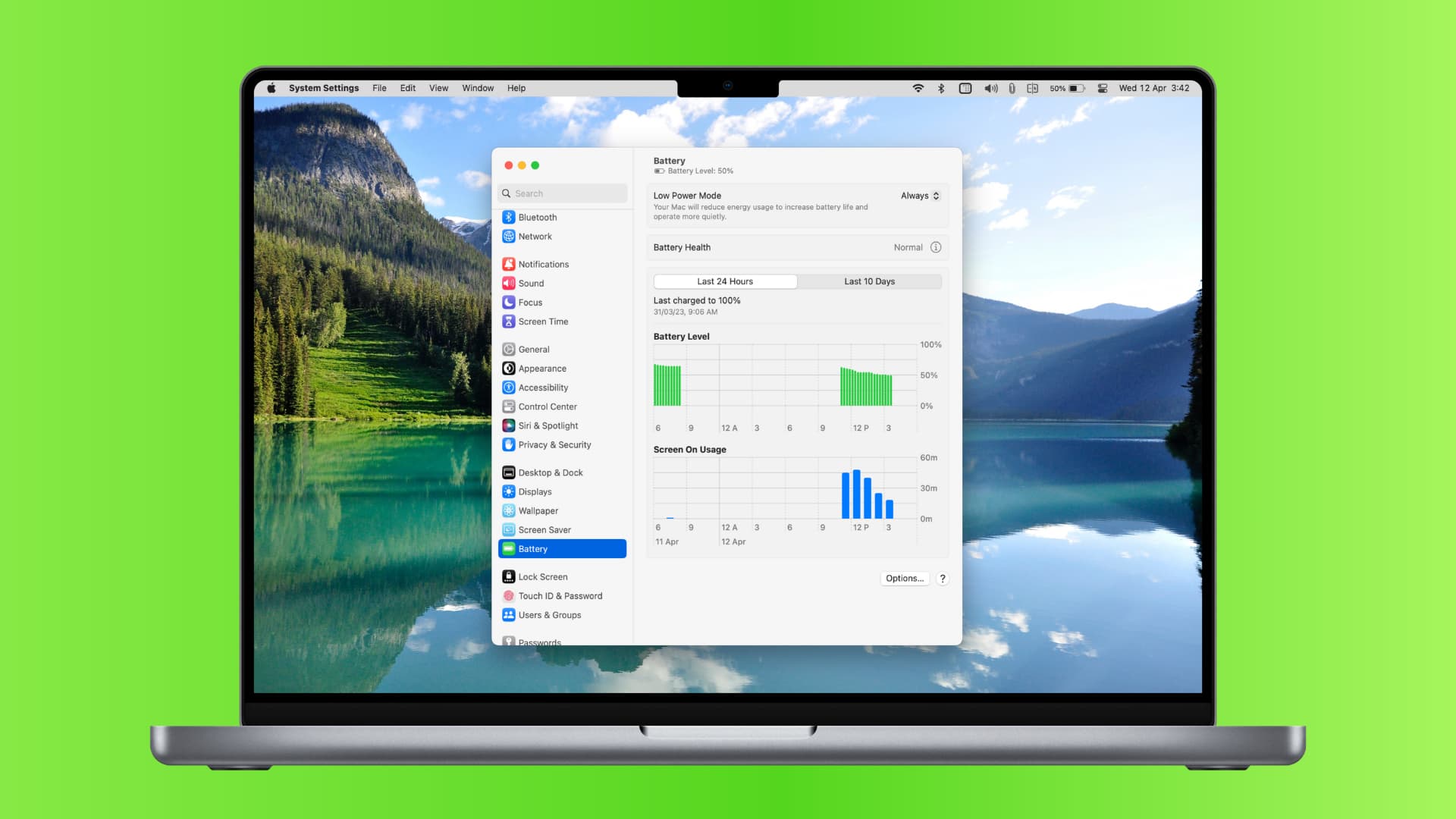
All apps do not consume the same amount of power. Some run efficiently and do not put much stress on the battery, while others may deplete your Mac’s battery quickly.
If your MacBook’s battery percentage is going down quickly, here are two ways to find the apps that are draining the battery. You can then close these apps, reduce their power usage, or simply put your Mac notebook into charging.
Related: 40+ tips to save battery on your MacBook Air or MacBook Pro
See apps using significant energy from Mac’s menu bar
One way to quickly know whether an app is consuming more power than average is by using the battery icon in your MacBook’s menu bar.
Simply click the battery icon, and you will see an app’s name under “Using Significant Energy” if it’s eating up a lot of battery. If no app is using a lot of power, it will say, “No Apps Using Significant Energy.”
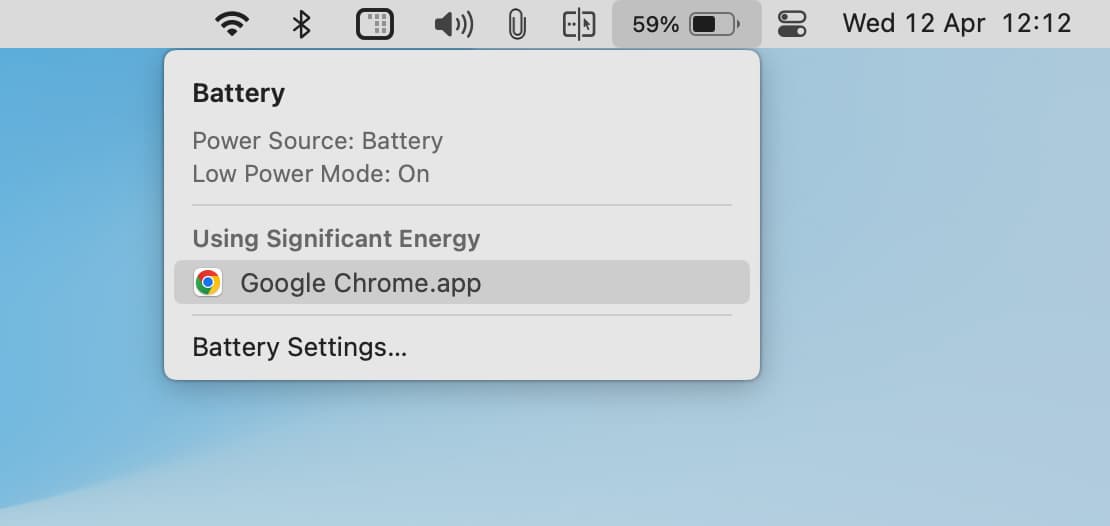
In most cases, an app will appear under “Using Significant Energy” because of the following three reasons:
1. The app is using more power
The app in question is in fact using a lot more power than usual. This can be because you’re performing some demanding tasks in that app.
For example, Google Chrome may not show under “Using Significant Energy” unless you open several tabs or do something intensive like 4K video playback or image editing that consumes more power. To address this, close unnecessary tabs or use Chrome’s energy saver feature.
Most gaming and editing apps like iMovie, Final Cut Pro, and HandBrake will rightly consume more power as it’s needed to execute the required task. In this case, it won’t be right to close the app. Thus, a better approach is to plug your MacBook into charging so that it uses power from the adapter.
2. The app is not functioning properly
It could be that an app in question is malfunctioning and consuming a lot more battery than usual, as well as significantly heating your MacBook. In this case, save the ongoing work and close all or that particular battery-hogging app. After about 30 seconds, reopen it, and it should hopefully work normally without consuming significant battery.
3. An inefficient or poorly coded app
It’s also possible that the app in question was not developed properly, hasn’t be updated in a while, or is inefficient compared to its alternatives. These apps may also appear to be using much more power than normal. To address this, update the app or use an alternative.
For example, if you find that Firefox frequently appears to utilize significant energy, consider using Apple’s Safari, which may prevent battery drain.
Can’t see the battery icon in MacBook’s top menu bar?
- Open System Settings and click Control Center.
- Enable Show in Menu Bar under the Battery heading.
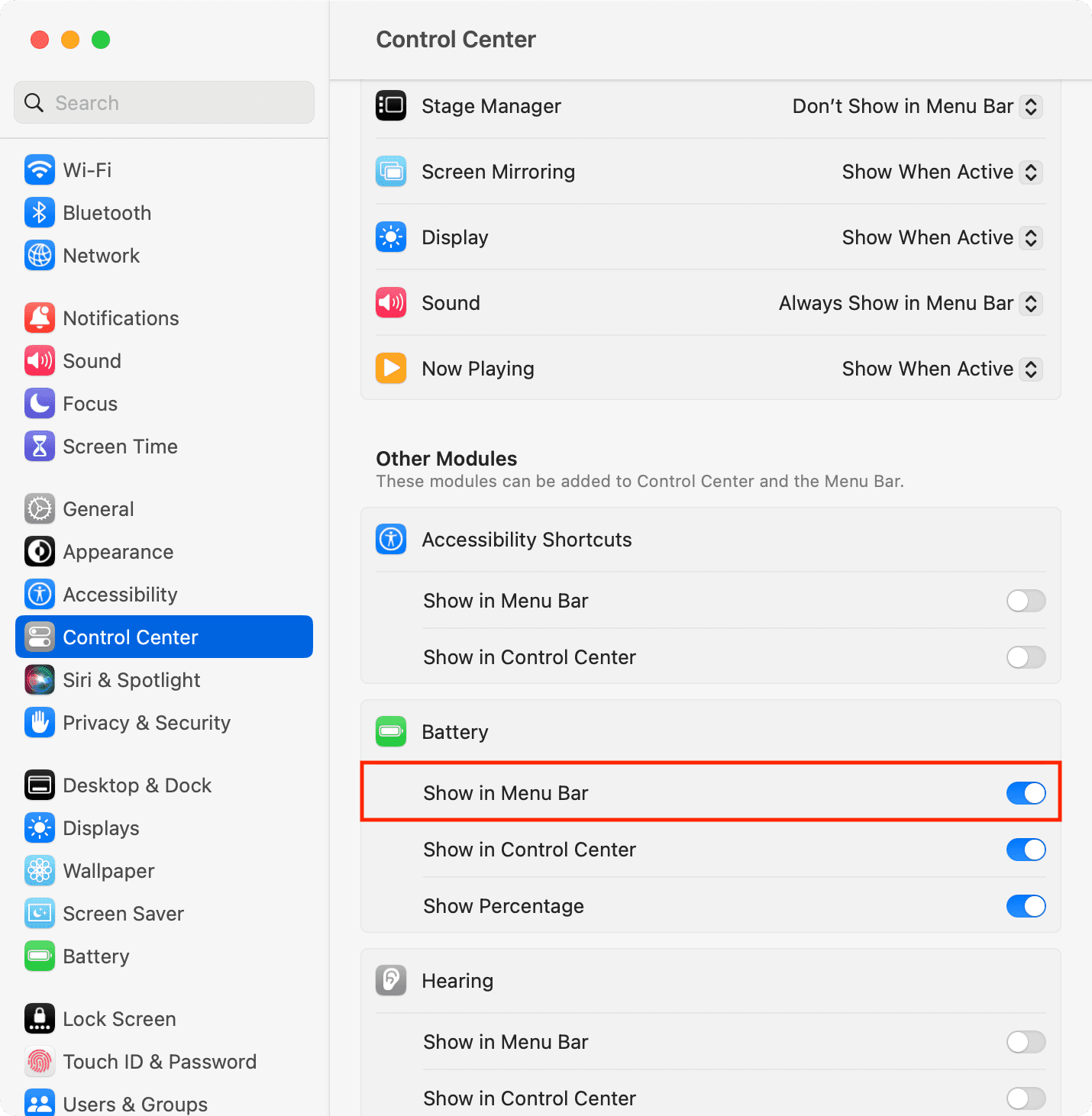
Use Activity Monitor to see which apps are using the most power
Activity Monitor is a built-in Apple app that shows you the real-time CPU, network, energy, and disk status of your Mac. Check out our tutorial to learn more about it.
Using Activity Monitor, you can identify power-guzzling apps and processes on your Mac:
1) Open Activity Monitor by pressing Command + Space Bar and searching for it or going to Applications folder > Other or Utilities.
2) When in Activity Monitor, click the Energy tab from the top.
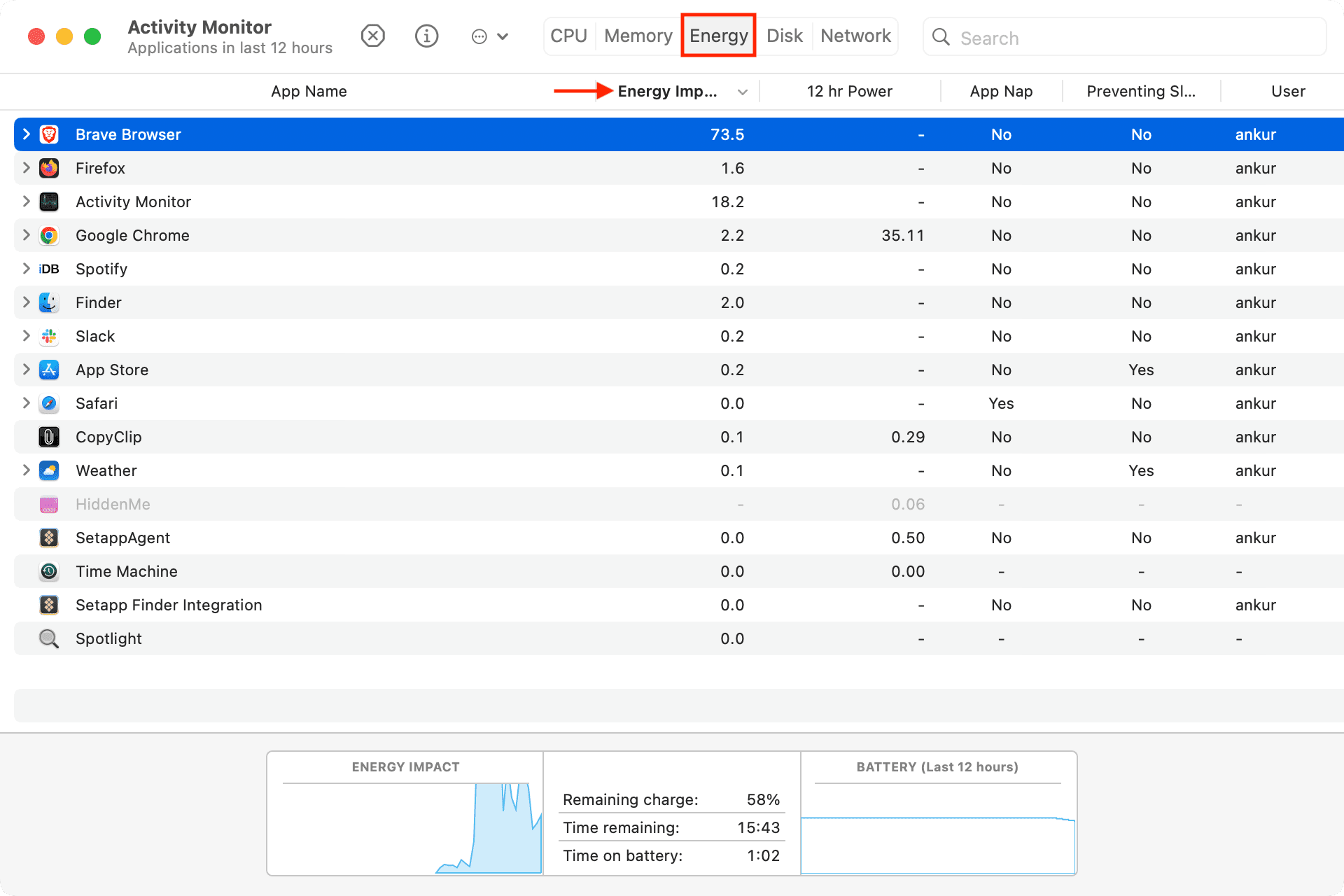
The apps here are listed in order, with the one consuming the most power on top, followed by the rest in descending order.
As per Apple, the Energy Impact column shows “a relative measure of the current energy consumption of the app.” macOS calculates the average Energy Impact number using several factors such as CPU, network, disk, and memory usage. The higher the Energy Impact number, the more battery that app is using.
You can click the tiny arrow for an app to see the individual running processes of that app and their impact.
3) To close a battery-hogging or malfunctioning app you don’t need to run, simply select it in Activity Monitor and click the cross (x) button > Quit. Alternatively, you can also click the info button ⓘ and choose Quit.
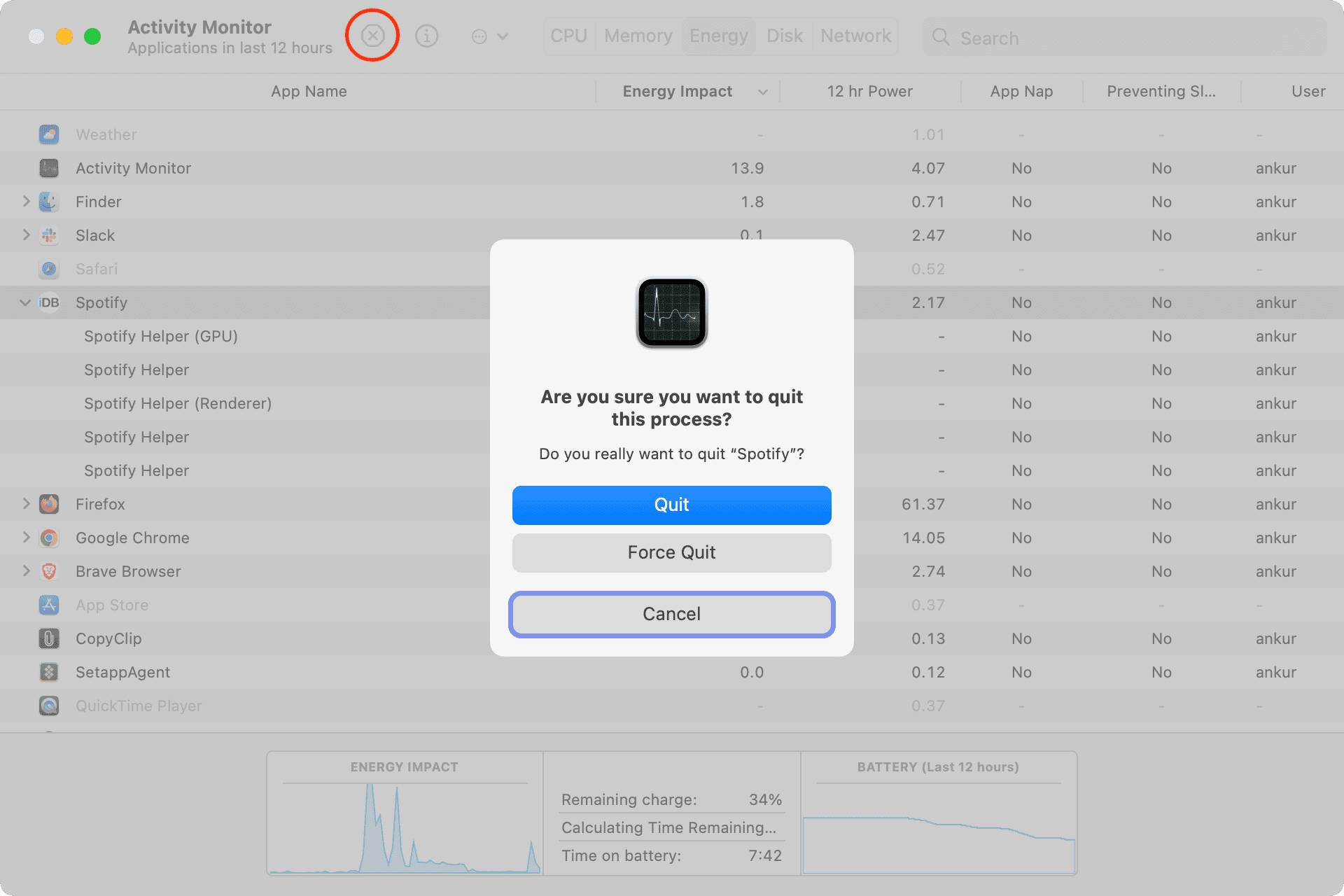
Note: If you can’t quit an app from here, learn how to force quit it, which will certainly close that misbehaving or frozen app.
4) 12 hr Power: This column shows the app’s energy impact in the last 12 hours or since the time you powered on your Mac. Here too, the higher number means that the app has consumed more battery. So, if you frequently find an app taking more power, make sure to update it, enable its power-saving features, contact its app developer and share your feedback, or look for an alternative.
5) Preventing Sleep: It’s an important column. If an app on your Mac blocks your computer from sleeping, in most cases, it will directly or indirectly consume more power, thus negatively affecting the battery life. So, unless specifically needed, make sure to quit (or uninstall) such apps to extend your battery.
Quick tips to save battery
Make sure to check out our dedicated guide that shows you over forty tips to save your MacBook’s battery. Definitely go through that. Here are a few sample tips related to this post:
- Use an alternative to that battery-draining app. This is especially helpful when you’re traveling or in a place without a wall socket.
- Update the app.
- Update your Mac.
- Use apps that prevent MacBook from sleeping only when absolutely necessary.
- Stop several apps from auto-launching on startup.
Check out next: How to find out your MacBook battery cycle count